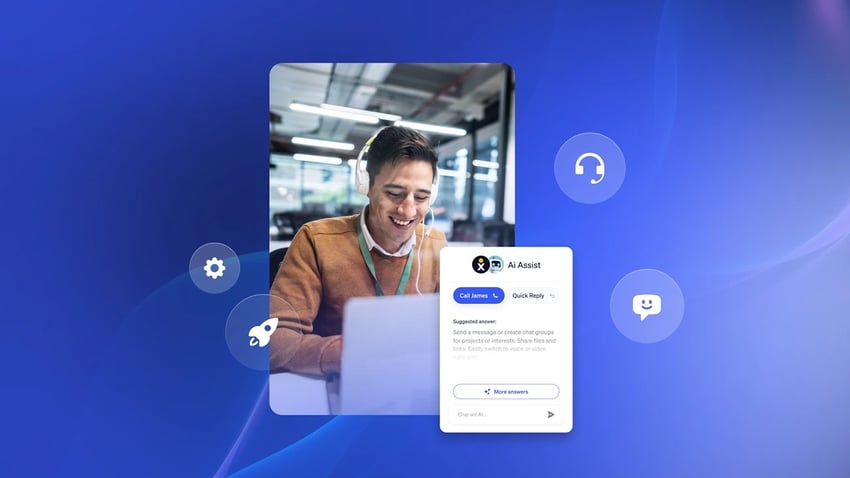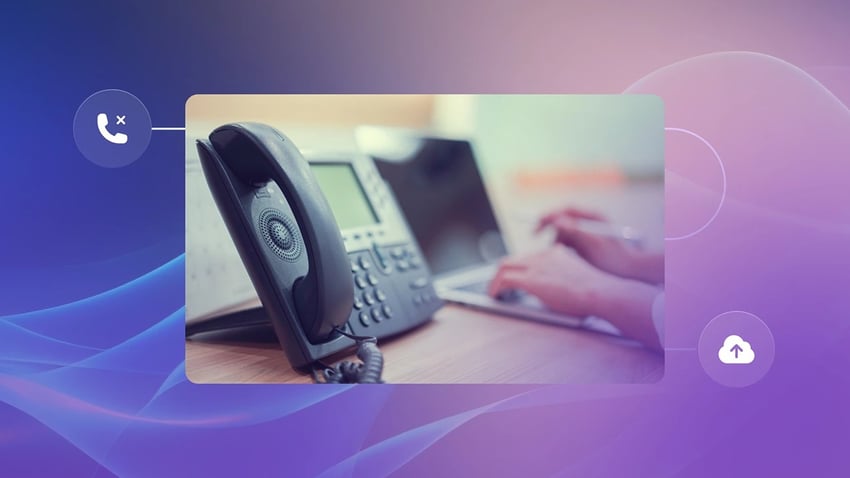Have you ever gotten halfway through a chat with customer service, only to switch to email for a more complex issue? Frustrating, right?
Now imagine that transition being smooth and effortless. You don’t have to repeat yourself, and the conversation continues seamlessly, even though the channel changed.
Unfortunately, that’s not always the reality. 79% of customers expect consistent service across all the different channels they interact with your business. But fragmented interactions are a major pain point, leading to frustrated customers who may not return.

In this article, we’ll tackle seamless customer communication. We’ll explore strategies to create a unified communication experience that keeps your customers happy and loyal.
What Is Seamless Customer Communication?
Seamless customer communication involves providing a consistent and personalized experience across all channels that a customer may use to interact with a company.
It means integrating and synchronizing communication touchpoints like website chatbots, phone calls, emails, and social media so that customers can seamlessly transition between channels while receiving relevant and contextual support.
The goal is to create a frictionless customer journey, where interactions feel effortless and tailored to individual needs, regardless of the communication channel used.
For example, a customer reaches out with a question on your website’s chatbot, and then seamlessly switches to a phone call with a rep who already knows their history. That’s the power of seamless customer communication.
Related: How to Build a Successful Social Media Customer Service Program
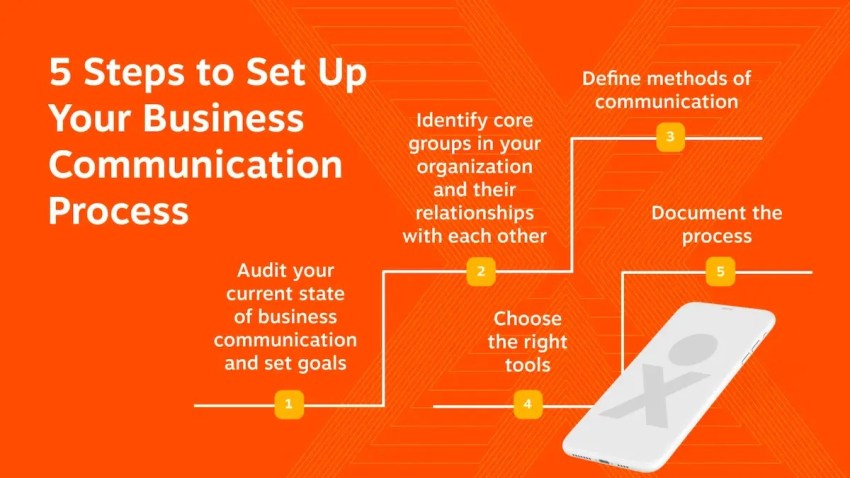
Why Is Seamless Customer Communication Important?
Implementing seamless customer communication offers businesses many benefits, including:
- Increased customer satisfaction and loyalty: When customers feel heard, valued, and supported, they’re satisfied and stay loyal to your brand.
- Improved brand reputation: Seamless communication builds trust and positive experiences.
- Reduced customer churn: Addressing customer issues quickly and effectively minimizes frustration and keeps churn at bay.
- Increased efficiency and productivity: Streamlined communication processes empower employees to resolve issues faster and free up time for other tasks.
- Faster resolution of customer issues: Seamless transitions between channels connect customers with the right person quickly, speeding up problem-solving.
6 Strategies To Build Seamless Communication
So, how do you achieve this communication standard? Here are some key strategies:
1. Unify your communication channels & interfaces
Imagine Sarah, browsing your website at 10 pm with a question about an order. Traditionally, she’d wait until morning to call your customer service. But what if she could get immediate help through a live chat?
Unifying your communication channels creates a smooth journey for customers. This means integrating your website, email, SMS, contact centers, social media, and even in-app messaging into a central platform.
Consistent branding and messaging across all channels further reinforce a cohesive experience.
Some things you can do to create a unified experience:
- Invest in a unified communication platform that integrates all your customer touchpoints.
- Develop clear brand guidelines for voice, tone, and messaging across all communication channels.
- Empower customers to switch channels seamlessly. Offer live chat transfers to phone calls, for example.
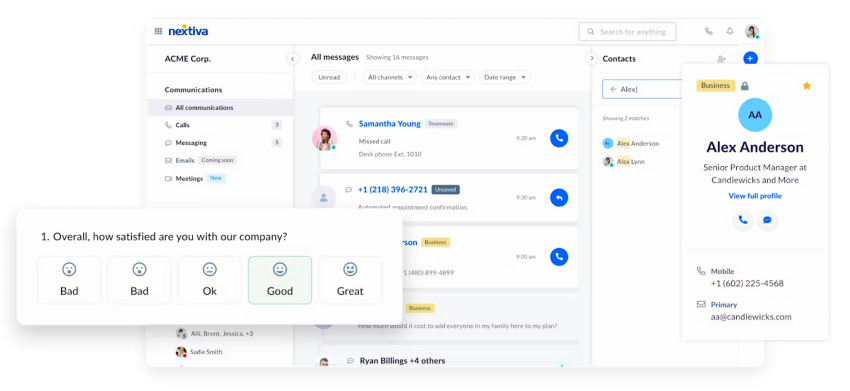
2. Anticipate & address customer needs
Customers appreciate brands that anticipate their needs and proactively address potential issues. This goes beyond simply reacting to inquiries.
You can implement proactive notifications to use data and past interactions to send timely and relevant updates. For instance, inform customers about upcoming order deliveries, flight changes, or potential service disruptions.
Also, use win-back campaigns to identify customers who haven’t engaged with your brand in a while and reach out with personalized offers or re-engagement campaigns.
Don’t let the communication end after a purchase; offer post-purchase tutorials, satisfaction surveys, or loyalty programs to keep customers engaged and build long-term relationships.
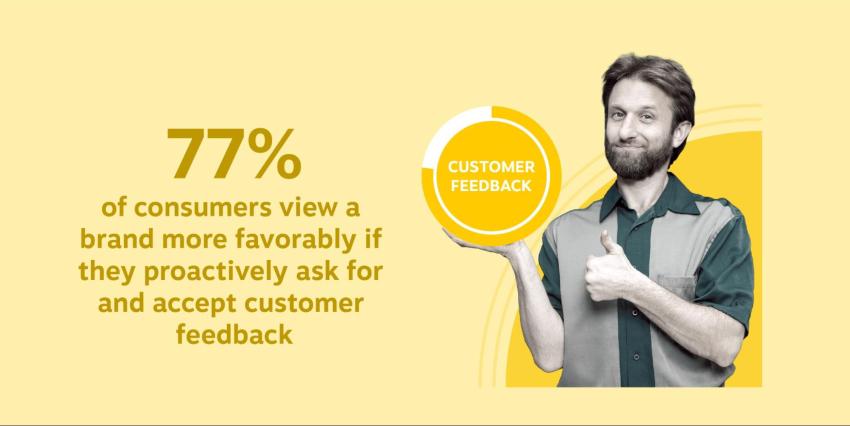
3. Use technology
Customers today expect immediate assistance and 24/7 availability. Technology empowers you to meet these expectations and enhance the customer experience simultaneously.
Consider the scenario of a late-night website inquiry. Instead of waiting, a customer can interact with an AI-powered chatbot on your website. This chatbot can answer simple questions, direct them to relevant FAQs, or even seamlessly escalate the interaction to a live agent for more complex inquiries.
Self-service options like knowledge bases and FAQs empower customers to find answers independently, fostering a sense of control and convenience.
Customer Relationship Management (CRM) software further elevates your communication strategy by providing a unified customer profile. This allows you to personalize experiences and anticipate customer needs based on their interaction history and preferences.
4. Prioritize customer data management
Customers often contact businesses via multiple channels for the same issue. Without a centralized system to capture and analyze their data, they’d have to repeat information with each interaction, creating a fragmented experience.
Effective customer data management is the fuel for seamless communication. It helps personalize communication and even anticipate customer needs.
You can proactively reach out to customers with potential solutions or updates based on their past interactions. This demonstrates attentiveness and care, fostering a positive brand perception.
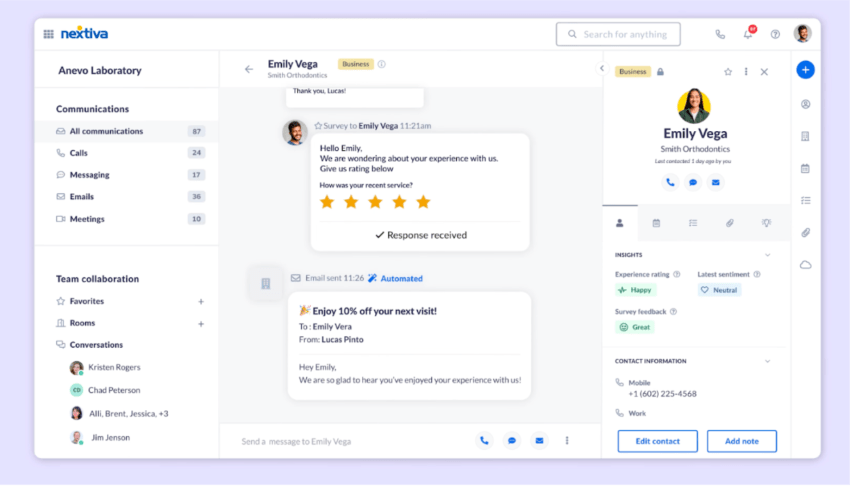
5. Promote a customer-centric culture
Technology and data are powerful tools, but a customer-centric culture is the heart of seamless communication.
Customers interacting with multiple representatives during their support journey tend to get confused. If each interaction is inconsistent or disjointed, their perception of your brand suffers.
Training your employees on effective communication skills, active listening, and empathy ensures every interaction is seamless and personalized, regardless of the channel.
Empowering employees with access to relevant customer information and decision-making autonomy further enhances their ability to resolve issues efficiently and provide seamless customer service.
6. Continuously improve your communication strategy
Seamless communication is an ongoing journey, not a one-time destination. Regularly measure the effectiveness of your business communication strategy and make adjustments as needed.
Track key metrics like customer satisfaction scores, resolution times, and channel usage patterns. Actively solicit feedback through surveys or polls to understand customer experience pain points.
You can also try A/B testing to experiment with different communication approaches and see what resonates best with your audience.
Encouraging a culture that prioritizes customer satisfaction and continuously seeks to improve the customer experience is key. This mindset should permeate across your organization, from frontline staff to leadership, encouraging a customer-centric approach for seamless communication.
Related: What Is Omnichannel E-commerce? A Strategy Guide for 2024
Examples of Seamless Customer Communication in Action
Companies that have successfully implemented seamless customer communication strategies have reaped significant benefits.
Amazon
This e-commerce giant integrated their website, mobile app, and customer service (phone, chat) seamlessly. Amazon drives multiple benefits for customers. Here are a few:
- Browse on their phone, add items to a cart on the website, and then complete the purchase through the app.
- Chat with a customer service rep who can see their order history and preferences, regardless of the channel used previously (website or app).

The smooth transition between different actions builds trust and reduces frustration. Customer retention and sales improve due to a more convenient shopping experience.
Verizon
Verizon uses an AI-powered virtual assistant to handle basic customer inquiries about billing, plans, or troubleshooting.
If the issue gets complex, the AI can seamlessly escalate the chat to a live agent. Importantly, the AI would pass on the conversation history and customer details, ensuring the live agent has context and can quickly resolve the issue.
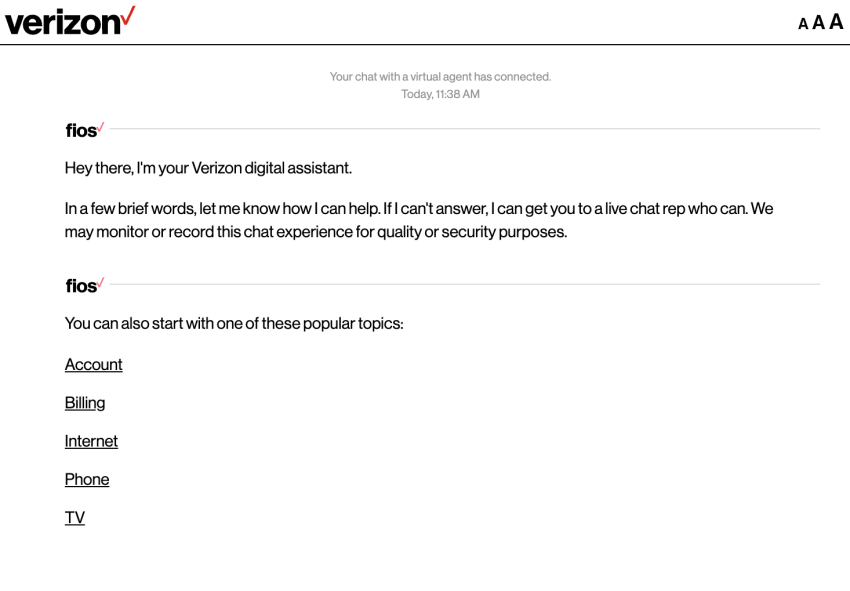
This reduces wait times for complex issues and helps avoid customers having to repeat themselves. It creates a more efficient and positive customer service experience.
Key Takeaways
Ready to create a seamless customer experience? These takeaways will help you create a frictionless and personalized customer journey.
- Effortless interactions: Provide an omnichannel experience that meets customers on their preferred channels (phone, email, social media, etc.) while remembering past interactions and preferences.
- Unified voice: Create a consistent brand voice and tone across all channels for a better user experience. Empower agents to seamlessly transfer chats to phone calls if needed.
- Small business solutions: Affordable unified communication options exist for SMBs. Use free/low-cost sales tools like chatbots and messaging apps to enhance customer interactions and improve your workflows.
- Know your customers: Prioritize data integration across channels. Use a unified communications provider to create a unified customer profile, capturing interaction history and preferences to anticipate their needs.
- Personalized advantage: Stand out with a customer-centric culture. Empower employees with autonomy and access to customer data for highly personalized customer support.
- Continuous improvement: Gather customer feedback across channels and use A/B testing to optimize communication methods and improve customer retention.
- Tech-powered future: Embrace technologies like AI-powered virtual assistants that can handle real-time routine inquiries and seamlessly escalate to human agents with full context.
- Beyond expectations: Move beyond meeting customer expectations. Foster an agile environment to design innovative, digitally-enabled experiences that remove silos and drive better customer engagement.
When customer expectations soar, seamless customer communication is no longer a nicety, it’s the cornerstone of business success.
Prioritize a customer-centric approach and use the power of technology to create a unified experience across all touchpoints, drive loyalty, brand advocacy, and sustainable growth.


















 Business Communication
Business Communication ![The Future of Seamless Communication with Five9 and Nextiva [Webinar Recap]](https://www.nextiva.com/cdn-cgi/image/width=1200,height=675,fit=cover,gravity=auto,format=auto/blog/wp-content/uploads/sites/10/future-of-seamless-communication-webinar-replay.jpg?resize=1024,576)

![The Future of Seamless Communication with Five9 and Nextiva [Webinar Recap]](https://www.nextiva.com/cdn-cgi/image/width=1200,height=675,fit=cover,gravity=auto,format=auto/blog/wp-content/uploads/sites/10/future-of-seamless-communication-webinar-replay.jpg)






